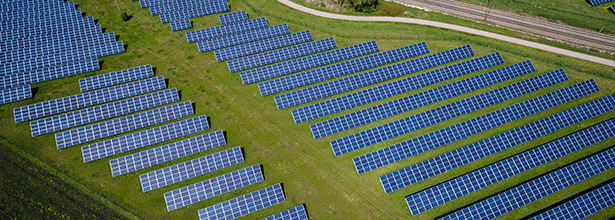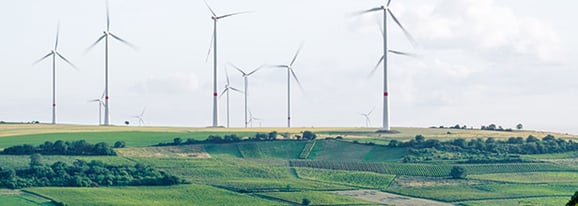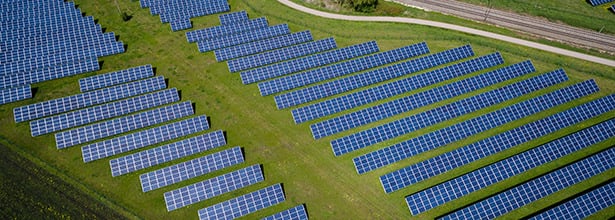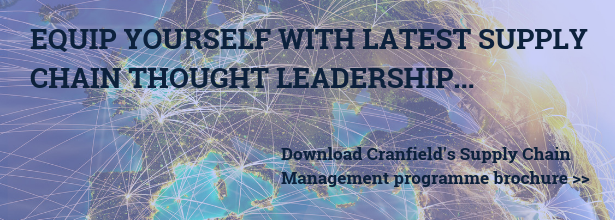
The policy commitment to make Britain the first zero carbon nation by 2050 has all kinds of implications for supply chains, how they’re set up and run.
There are plenty of piecemeal projects happening around sustainability. In warehousing there are examples of flagship green facilities like the Adnams beer distribution facility at Reydon with the largest living roof in Britain, sustainable drainage, water harvesting, solar panelling, natural lime and hemp walls for insulation [[http://www.greensuffolk.org/sgbn/suffolk-case-studies/adnams-distribution-centre/]].
In transport, DHL is using solar panels on the roofs of vehicles to contribute to temperature control, reportedly improving fuel economy by around 5.2% (in research carried out in winter months: http://www.delivered.dhl.com/en/articles/2019/01/solar-mats-revolutionizing-transport.html. Across the daily running of the DHL fleet that’s a huge saving. Simple measures, such as planning to ensure trucks don’t run with empty loads, and looking at alternative ways to ship products (transporting wine in a vast tank and bottling locally) are all making a difference to carbon footprint (and cost savings).
The move to online shopping and home delivery is believed to have carbon emission reduction benefits. Heriot-Watt University research [[http://www.greenlogistics.org/SiteResources/343c5312-af8f-4cc0-a271-4191cb2ccdff_Edwards-McKinnon-ShoppingTripOrHomeDelivery-FocusLogisticsJuly2009.pdf]] suggests a typical trip by car to buy a single product results in twenty times more carbon produced than arranging home delivery.
But none of this, in itself, is systemic. In order to meet the 2050 targets there is going to need to be attention to each link, cog and material in the chain from the source of raw materials, through manufacturing, storage and transportation.
An example of what this might look like - again, just a model of innovative practice rather than the norm across a business - is BMW’s electric vehicle, the i3: designed from the floor upwards to ensure it has one of the lowest ‘whole life’ carbon footprints [[https://www.bmw.cc/en/all-models/bmw-i/i3/2016/sustainability.html]]. Hydroelectric power is used to produce the carbon fibre bodywork; the wooden trim is from fast-growing eucalyptus, the manufacture is powered by wind turbines.

(Courtesy of Professor Richard Wilding, OBE)
What kind of sustainability do we want?
The options for introducing carbon-reducing approaches and materials are many. The problem will be finding the combination of changes that are genuinely sustainable, in other words, what is sustainable for the environment (to hit carbon targets) but also economically for businesses, and socially (in terms of what new models mean for people and jobs). We need this bigger, broader sustainability for the zero carbon future to work (and not to be a series of painful experiments).
Many seemingly simple changes come with a tangle of unwanted implications. It’s possible to engineer plastics and alternatives to plastics that last as long as we want them to. But where are the raw materials involved going to come from? Are they going to be large enough and reliable enough supplies of sugar cane for producing biodegradable wrappings? If we all made the switch to electric cars tomorrow, where would all the lithium come from for the batteries?
The home delivery model may reduce the number of car journeys to retail outlets, but there are implications for businesses who have to take the hit from delivery costs - and worse when a product is returned. And longer-term, a delivery culture will mean empty town centres, limited retail store jobs, communities without a social hub.
If, for example, we begin to use cardboard as a standard replacement for plastic bubble wrap, there needs to be three times the thickness of material, meaning less space per transport vehicle, higher costs and more vehicles on the road. Similarly, we could go back to using paper bags for crisps. But the shelf-life is just two days rather than six months.
Supplies for sharing and circling
Within all this complexity lies the most straightforward answer to establishing a working sustainability: changing our consumption habits from meetings our endless variety of wants to more of just meeting needs. Replacing the consumer-dispose-consumer cycle with something more realistic. We tend to treat symptoms not causes. The symptom we see is unsustainable impact on the environment, economy and society. We treat symptoms but the “cause” is consumption. How can we all consumer a little less? This is a challenge I set myself, and sadly like many New Year resolutions fail at within a few weeks. So supply chains need to further evolve, addressing symptoms but ultimately also supporting the treatment of the causes. It may be unfashionable to consider this, but perhaps a ‘slow’ supply chain where people have to think before they buy, and are not instantly gratified with fast delivery, may ultimately help change our behaviour.
This, of course, presents its own challenges for supply chains. The sharing model for example. So many cars sitting in people’s drives unused most of every day that could be rented out. Do we individually all need a washing machine, a lawn mower etc? The supply chain will need to adapt to lower levels of demand alongside servicing the need for more repairs, maintenance, spare parts. The growth in the circular economy will bring the need for more attention to the design process and materials, how everything can be made specifically to be recycled, what can be broken down and re-made, exactly where the valuable materials are going to be used - and moving away from our muddled culture of throwing everything into a bin with just the hope it might be recycled.
Our work in this area is critical to professionalising the supply chain profession and is one of the key themes explored within the Cranfield Supply Chain Management programme enabling and optimising your supply chain methods to increase resilience, sustainable supply chain management and future supply chain challenges.
Blog produced by: Richard Wilding OBE, Professor of Supply Chain Strategy and Programme Director of the Supply Chain Management Programme, Cranfield School of Management.
Read more:
- Supply Chains and Brexit – To stockpile or not to stockpile?
- Will Supply Chain 4.0 digitisation mean integration or disintegration
- Brexit Trick or Treat?
- Four things that should be on every supply chain leader's "To-Do list"
- Securing the Success of Strategic Supply Chain Initiatives Today and Tomorrow




